
The Breed History
The Pekingese is an ancient Chinese dog breed that was so highly
esteemed that they became a symbol of good fortune, and artistic
representations of them, (Foo Dog idols) became family heirlooms.
In Buddhism, the lion is a symbol of Buddha, and this may be the
origin of the special position the dog held since in legend, these
dogs were thought to originate from union of monkey and lion.
A favorite of the Imperial families, a theft of one of these dogs
was punishable by death. Earliest records indicate the breed was
distinctive by the 8th century. First specimens arrived in Britain
in the year1860; one was given to Queen Victoria. The AKC first
registered the breed in 1906.
Breeding for Function
These dogs have always been kept purely for companionship.
Physical Characteristics
Height at Withers: 6-9" (15-23 cm)
Weight: < 14 lb (6 kg).
Coat: Profuse long coat is straight, stands off, and texture of the
hairs is coarse. All colors are allowed. The undercoat is dense and soft.
Longevity: 12-13 years.
Points of Conformation: The overall conformation is stocky and
compact; slightly longer than tall. The nickname lion dog derives
from the fact that the dog is much heavier in the fore than behind,
and with a full mane somewhat resembles a little lion in profile.
They are not dainty. The head is wider than deep with a broad flat
top, jaw is wide at the base, skull is brachycephalic, with correct
standard placing the brow in the same plane as the chin and nose.
The nose is pigmented black and-sitting up between the prominent
eyes. The eyes are very dark and wide set, and palpebral margins
are black. A prominent v-shaped wrinkle extends cheek to cheek
over the nose, and the stop is deep and well defined. The muzzle is
broad and short, and the hair is pigmented black. The jaw is slightly
undershot. Ears are folded, heavily feathered, and hang to frame the
face on each side. They possess a short thick neck, moderate thorax
depth, moderate but distinct abdominal tuck up, the topline is level;
the high-set tail is also profusely feathered and carried over the
back, hanging to the side. Forelimbs are short and slightly bowed in
the radius. Feet are outturned, large, flat and well feathered. Gait is
rolling in front and not fast moving.
Recognized Behavior Issues and Traits
Breed characteristics reported include: Regal carriage, bold and
courageous, good alarm barker. Stubborn and independent minded
(this is a significant characteristic that is encouraged with a
resulting personality peculiar to the breed). Calm, good-tempered
and affectionate, with condescending air (others term this noble
bearing or dignified), and loyal.
Socialized early, they are generally good with other pets and
children but are aloof with strangers. Some can be aggressive. They
have low exercise needs, tolerate heat poorly, and have a snoring
tendency.
Daily brushing is needed, and they have a high shedding tendency;
need lots of human contact. Care around eyes and anus is needed
due to the facial fold and in the latter case, hair.
Normal Physiologic Variations
In a UK study, 43.8% of litters were delivered via Cesarean section.
Drug Sensitivities
None reported
Inherited Diseases
Patella Luxation: Polygenically inherited laxity of patellar
ligaments, causing luxation, lameness, and later degenerative joint
disease. Treat surgically if causing clinical signs. Reported at an
increased frequency in the breed, but too few Pekingese have been
screened by OFA to determine an accurate frequency.
Hip Dysplasia and Legg-Calve Perthes Disease: Polygenically
inherited trait causing degenerative hip joint disease and arthritis.
Reported at a high frequency by the OFA, but too few Pekingese
have been screened to determine an accurate frequency.
Elbow Dysplasia: Polygenically inherited trait causing elbow
arthritis. Too few Pekingese have been screened by OFA to
determine an accurate frequency.
Disease Predispositions
Intervertebral Disc Disease (IVDD): Pekingese dogs have an
increased risk of developing spinal cord disease due to prolapsed
disk material. Requires immediate treatment to prevent permanent
paralysis. Reported at a frequency of 4.5% in the breed. Dorn
reports a 2.50x odds ratio versus other breeds.
Brachycephalic Airway Syndrome: The brachycephalic syndrome
causes breathing difficulties, especially in hot weather. It includes
Stenotic Nares, Elongated Soft Palate, Everted Laryngeal Saccules,
Laryngeal Collapse, and occasionally Hypoplastic Trachea.
Chronic Valvular Heart Disease: Heart failure due to valvular
insufficiency, usually involving the mitral valve. Treat with heart
medications. Pekingese have a 3.4x odds ratio for chronic valvular
disease versus other breeds.
Cataracts: A partial or complete opacity of the lens and/or its
capsule. CERF reports a high frequency, but too few Pekenese have
been examined to determine an accurate frequency. Reported in
2.14% of Pekingese presented to veterinary teaching hospitals. CERF
does not recommend breeding any Pekingese with a cataract.
Keratoconjunctivitis Sicca (KCS, Dry Eye): Ocular condition
causing lack of tear production and secondary conjunctivitis,
corneal ulcerations, and vision problems. Age of onset 2-5 years.
CERF reports a high frequency, but too few Pekenese have been
examined to determine an accurate frequency. CERF does not
recommend breeding any Pekingese with KCS.
Anal Gland Disease: Anal sacculitis and anal gland infection. Dorn
reports a 3.03x odds ratio versus other breeds.
Chronic Superficial Keratitis (Pannus), Ectopic Cilia, Entropion,
Exposure Keratopathy Syndrome, Lens Luxation, Macroblepharon,
and Progressive Retinal Atrophy are all reported in multiple
Pekingese by CERF examination. Too few Pekingese have been CERF
examined to determine an accurate frequency in the breed. Dorn
reports a 2.55x odds ratio for eye disease versus other breeds.3,8
Hypothyroidism: Inherited autoimmune thyroiditis. 2.0% positive
for thyroid autoantibodies based on testing at Michigan State
University. (Ave. for all breeds is 7.5%).
Distichiasis: Abnormally placed eyelashes that irritate the cornea
and conjunctiva. Can cause secondary corneal ulceration. Dorn
reports a 2.02x odds ratio versus other breeds. CERF reports a high
frequency, but too few Pekenese have been examined to determine
an accurate frequency.
Primary (Narrow Angle) Glaucoma: Ocular condition causing
increased pressure within the eyeball, and secondary blindness due
to damage to the retina. Diagnose with tonometry and gonioscopy.
Diagnosed in 1.22% of Pekingese presented to veterinary teaching
hospitals.
Cystic Calculi: Pekingese are found to have a predisposition to
forming bladder stones. Mineral composition is not reported.
Staphylococcus intermedius was isolated from 67.9% of female
Pekingese with uroliths.
Portosystemic shunt (PSS, liver shunt): Congenital abnormal
blood vessel connecting the portal and systemic circulation. Can be
intrahepatic or extrahepatic. Causes stunting, abnormal behavior,
possible seizures, and secondary ammonium urate urinary calculi.
Treatment of PSS includes partial ligation and/or medical and
dietary control of symptoms. Tobias reports a 7.1x odds ratio versus
other breeds.
Perineal Hernia: Pekingese have a predisposition to developing
perineal hernias. Treatment is surgery.
Sertoli Cell Testicular Tumor: Pekingese males have a greater risk
of developing sertoli cell tumors than other breeds.
Atlantoaxial Subluxation: Pekingese have an increased risk for
atlantoaxial subluxation due to a congenital abnormality of the
dens or atlantoaxial ligaments. Dorsal displacement of the axis
results in compression of the cervical spinal cord. Treatment is
surgery. Unknown mode of inheritance.
Necrotizing Meningoencephalitis: Affected dogs have clinical
signs of recurrent seizures and progressive abnormal gait and
behavior, which do not respond to treatment. At necropsy,
histopathological features of the inflammatory lesions are
consistent with necrotizing meningoencephalitis and resembled
those described as Pug dog encephalitis.
Cleft Lip/Palate, Cryptorchidism, Fold Dermatitis, Hydrocephalus,
Microphthalmia, Prognathism, Pseudo-Hermaphrodism, Renal
Dysplasia, and Wry Mouth are reported.
Isolated Case Studies
Multiple Congenital Urinary System Abnormalities: An
eight-month-old Pekingese bitch with urinary incontinence was
found to have three congenital anomalies of the urinary tract:
left renal agenesis, bilateral ectopic ureters with a left cranial
blind-ending ureter, and urinary bladder hypoplasia.
Ureterocele: Report of a 5-year-old female Pekingese with a
ureterocele, ipsilateral hydroureter, and bilateral renal dysfunction.
Osteochondritis Dissecans of the Femoral Head: An 8-month-old
male Pekingese with a 1-month history of right hind limb lameness
and crepitus in the right coxofemoral joint treated by femoral head
ostectomy. Gross and microscopic examination of the femoral head
resulted in a diagnosis of osteochondritis dissecans.
Cervical Syringohydromyelia: An 11-year-old male Pekingese
presented with a right-sided head tilt, ataxia, scoliosis, and
proprioceptive deficits. MRI of the head and neck revealed a mass
in the brainstem, cerebellar herniation, and syringohydromyelia. The
dog responded to corticosteroids and radiation therapy of the mass.
Genetic Tests
Tests of Genotype: Direct tests for coat color are available from
VetGen.
Tests of Phenotype: Recommend hip and elbow radiographs,
patella examination, CERF eye examination, thyroid profile including
autoantibodies, and cardiac examination.
Miscellaneous
- Breed name synonyms: Peke, Pekinese, Peking Palasthund. In
Chinese, fond historical nicknames include Lion Dog, Sun Dog
(those with red-gold coats) and Sleeve Dog (small breed
specimens that were carried in the sleeves)
- Registries: AKC, UKC, CKC, KCGB (Kennel Club of Great Britain),
ANKC (Australian National Kennel Club), NKC (National Kennel Club)
- AKC rank (year 2008): 55 (2,056 dogs registered)
- Internet resources: Pekingese Club of America Inc.:
thepekingeseclubofamerica.com
The Pekingese Club (UK): thepekingeseclub.co.uk
Photo Gallery of Breed - Pekingese - Dog Breed

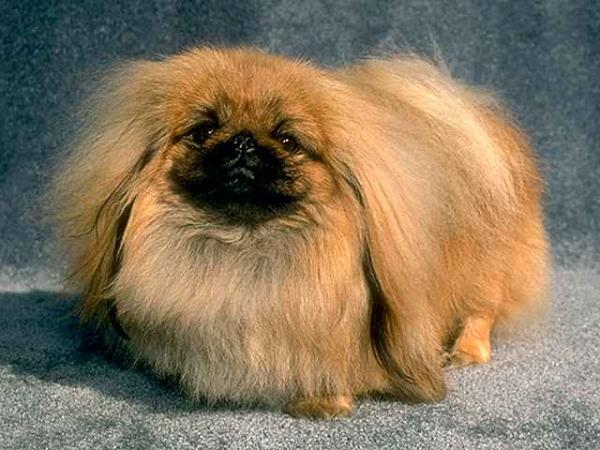
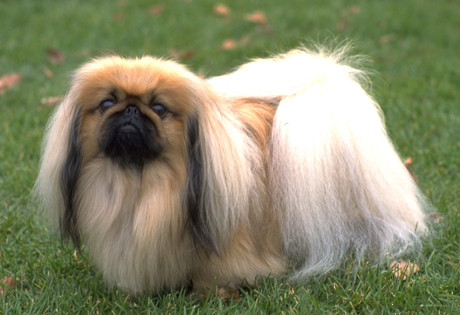

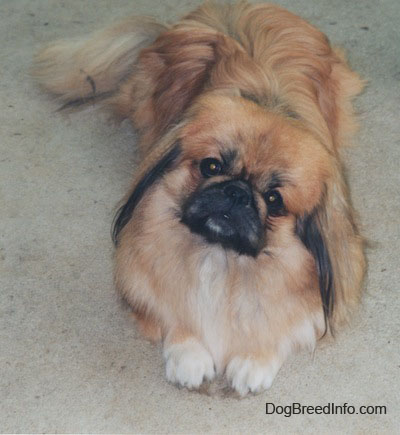
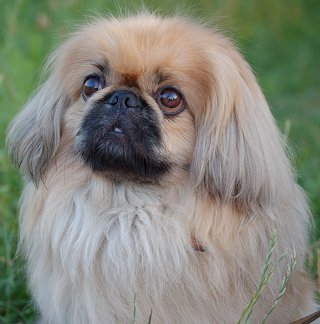

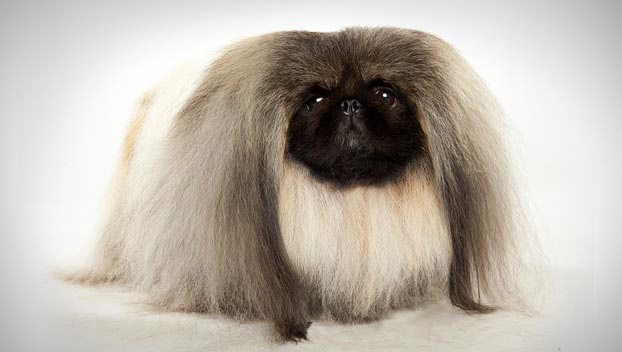
 Animalia Life
Animalia Life